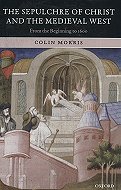|
The Sepulchre of Christ and the Medieval West: From the Beginning to 1600
|
|
Colin Morris
|

|

The tomb of Christ has been surprisingly neglected in histories of the Church. Colin Morris's book begins with a discussion of the character of Christ's memorial at Jerusalem and its discovery and development by Constantine, but the focus is not on the development of the architecture there. The centre of interest is the significance of the Sepulchre as a vital influence in the making of Western Europe. The wish to visit the tomb set on foot a long-lasting pilgrimage which helped to make Europe familiar with the Greek and Islamic East, and which influenced the development of Western society and its structures. The desire to 'bring the Holy Sepulchre to the West' by providing copies or memorials shaped architecture, sculpture and painting, and was central to the worship and liturgy of the Church. More dramatically, the ambition to conquer the Sepulchre, to defend it and recover it, was a central objective of the crusades, and formed the pattern of hostility which developed between the Latin and Muslim worlds. Even with the final loss of the holy Land in the thirteenth century, Latin interest did not disappear. Travel took the new form of a 'great pilgrimage' of the late Middle Ages which reflected the changing character of the devotion of the period and gave rise to a major genre of literature. Late medieval society responded to the loss of the Holy Land by creating national kingdoms as 'holy lands' in the West, and responded in turn to the collapse of the Mediterranean pilgrimage by creating Calvaries and 'holy mountains' to act as new pilgrim centres at home. This book brings together a variety of social, political, and religious themes which have more often been considered in isolation.
|
|
